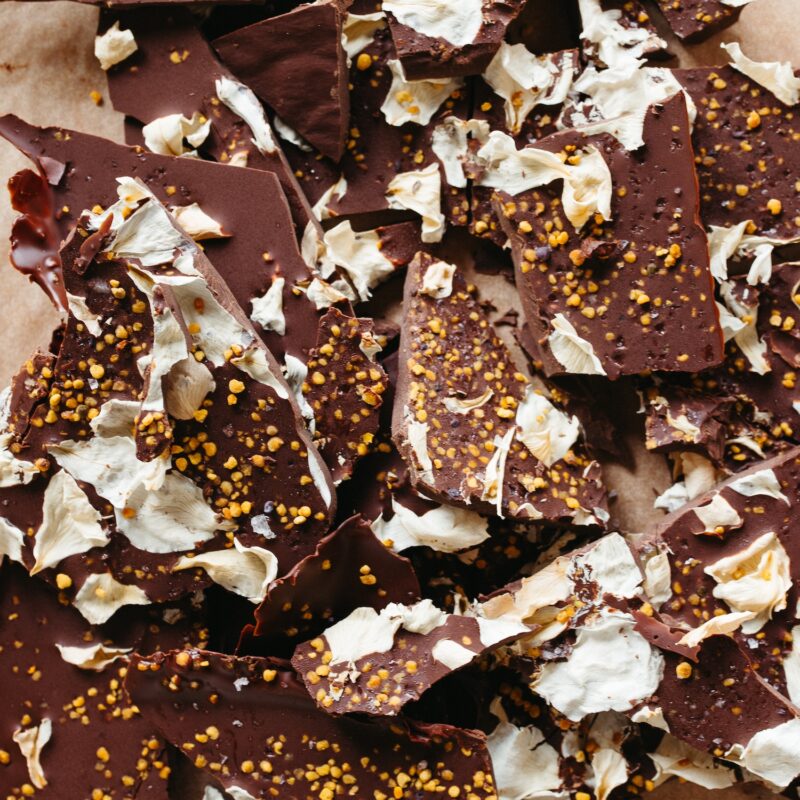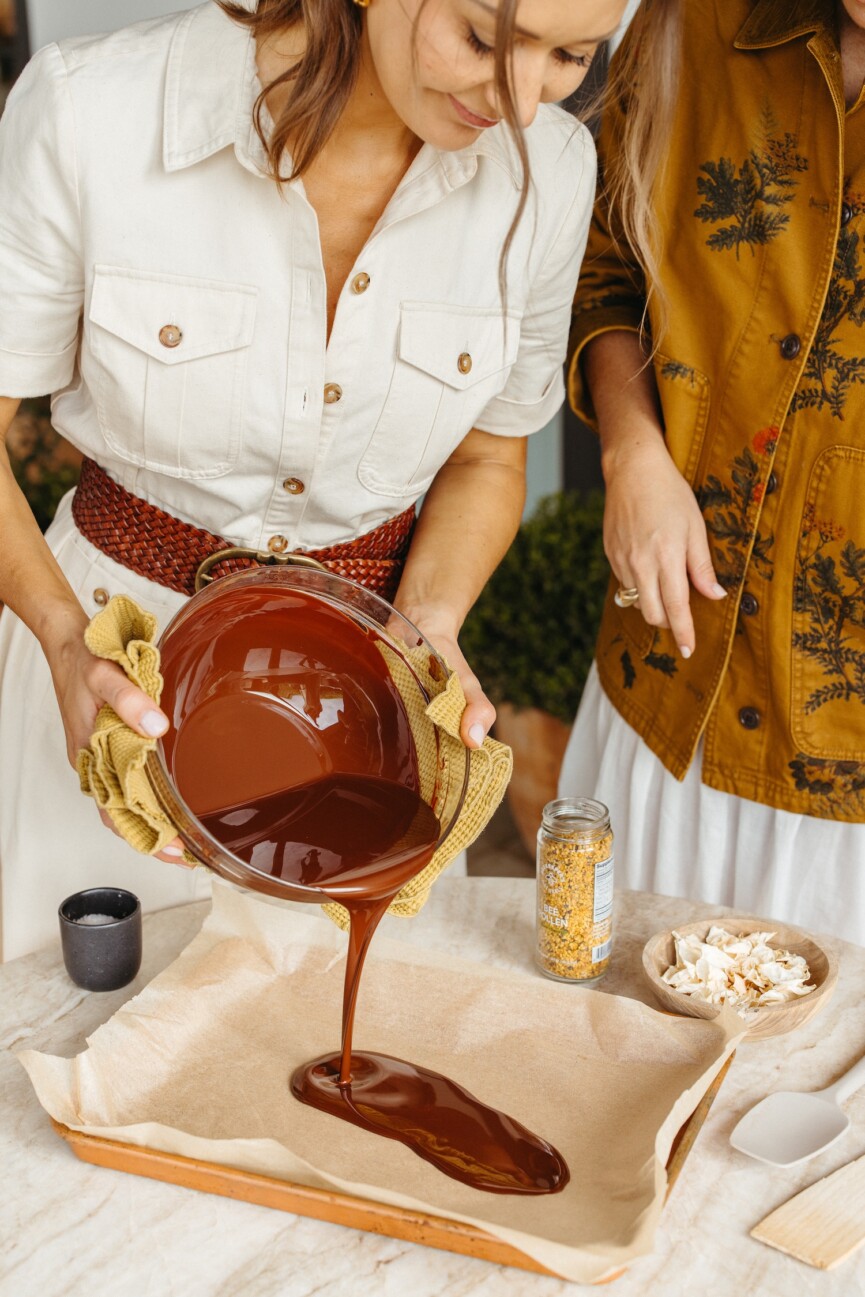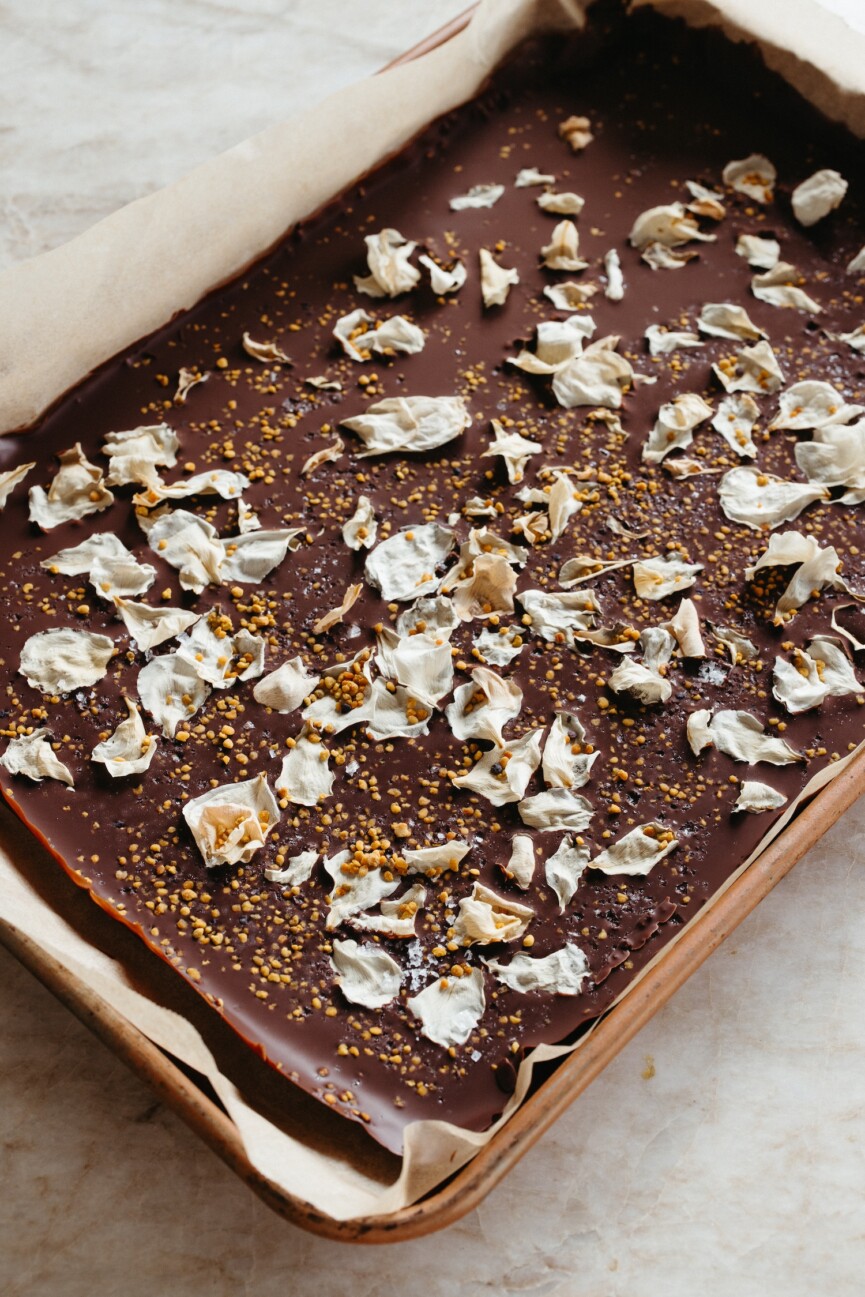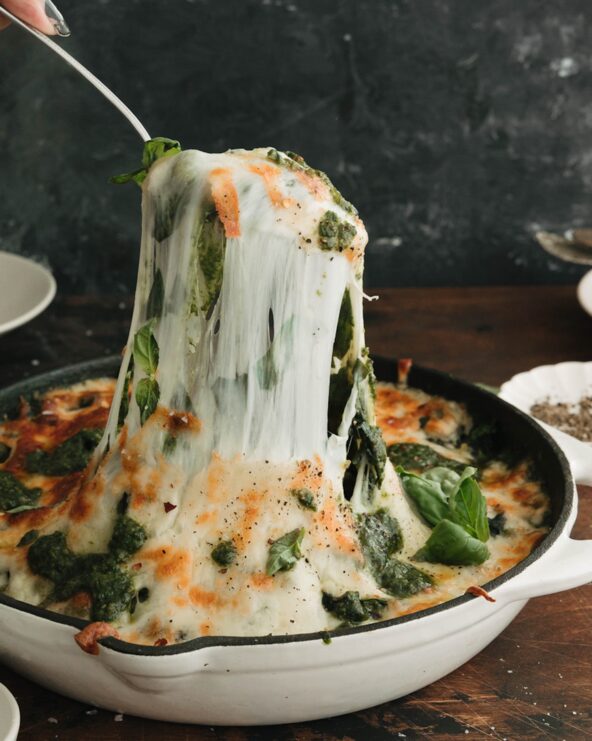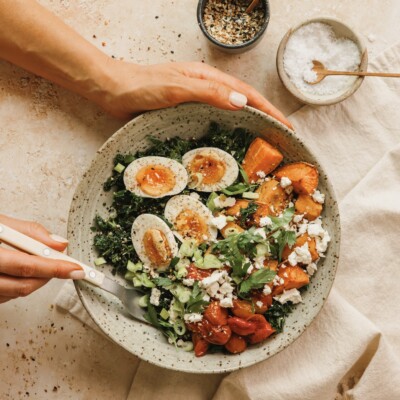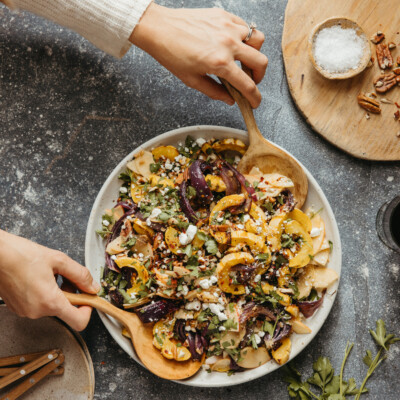Some desserts are more than just a treat—they’re memories that are infused with something like magic. For Camilla Marcus, this chocolate bark checks all the boxes. She says:
“I grew up with Rocky Mountain Chocolate, as my dad is originally from Denver, Colorado. Especially during the winter, it was our treat and something we patiently looked forward to when we went to his home state and got to savor all of the hand-crafted creations,” Marcus said. “My parents’ particular favorite was the dark chocolate bark, often with almonds but sometimes different combinations with what was in season. At the time, of course, this was too grown-up for me, paling in comparison to chocolate-dipped honeycomb.”
This floral, nutrient-packed version is her grown-up ode to those moments—a bark that feels as nostalgic as it does elevated.


In this recipe, rich dark chocolate meets bee pollen (a superfood packed with serious benefits), rose petals, and flaky Himalayan or Maldon salt for a flavor profile that honors Marcus’ childhood memories. It’s beautiful enough to serve at a gathering and simple enough to whip up for a weeknight treat.

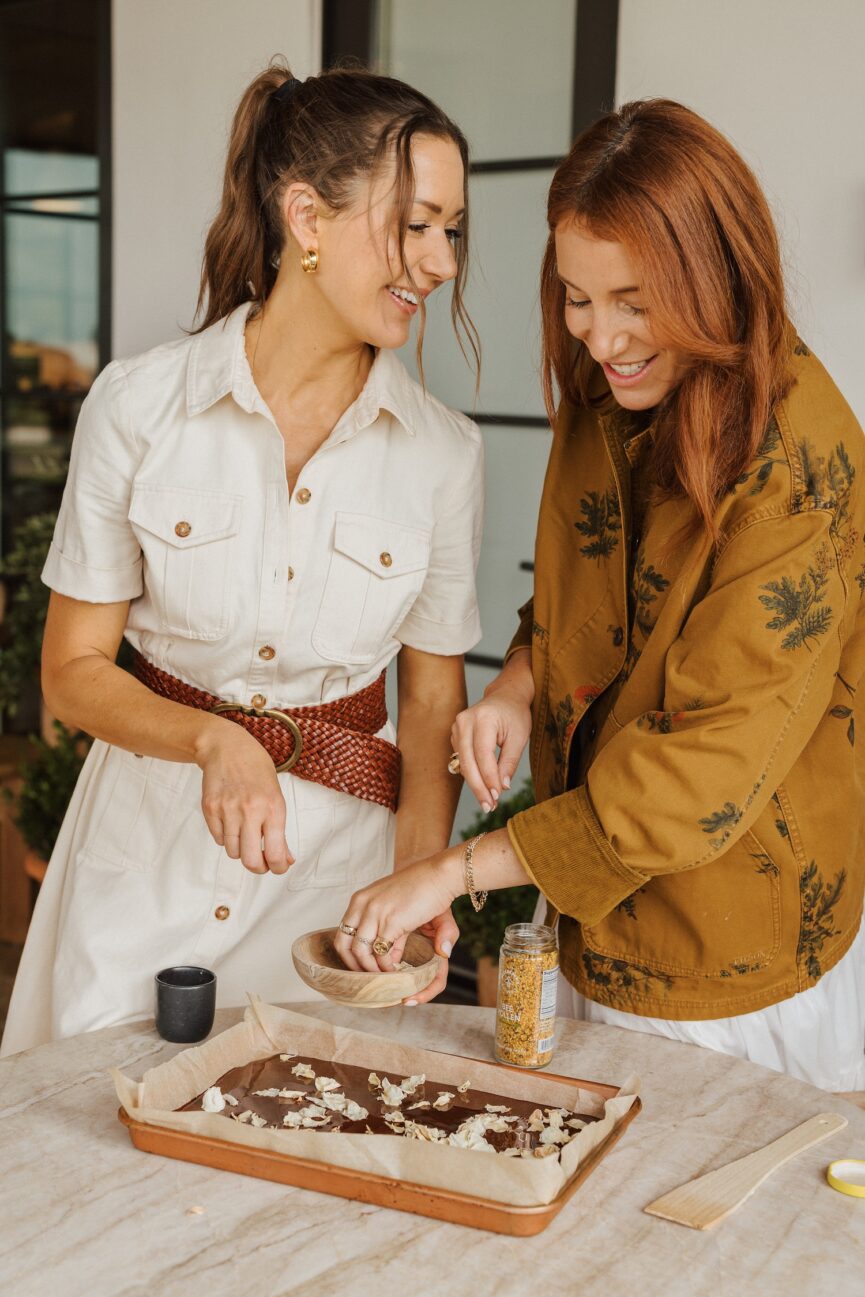
Camilla’s Tips for Perfect Chocolate Bark
You can also have some fun with these toppings, using anything that offers some crunch and flavor in a small, sprinkleable size. “I’m a magnet for large format anything, especially dessert, and this is a deceptively simple yet notable centerpiece to a table for gathering that comes with an irresistibly fun activity: instead of breaking bread, you can break bark. Most importantly, invest in a mallet so you can have fun smashing the bark,” Marcus said.
Print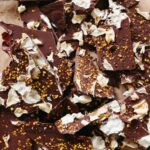
Dark Chocolate Bark with Bee Pollen, Rose Petals, and Pink Salt
- Yield: 1–1/4 sheet tray 1x
Description
This chocolate bark recipe is an elevated twist on a nostalgic classic.
Ingredients
- 20 ounces dark chocolate (see tip)
- 3 tablespoons bee pollen
- 2 tablespoons crushed dried rose petals
- 2 tablespoons pink Himalayan salt or Maldon salt
Instructions
- Line a quarter sheet pan with parchment paper and set aside, making sure you have enough room in your freezer to fit the tray later on.
- Set up a double boiler on your stovetop to melt the chocolate or improvise one by setting a metal mixing bowl over a saucepan containing about 3 inches of water and bring to a boil. Once hot, put the chocolate into the upper pan or bowl and swirl the chocolate with a spatula just until fully melted.
- Remove from the heat carefully and quickly, pouring onto the parchment-lined pan and gently spreading it evenly with the spatula. The goal is for the bark to be about 1/4 inch thick. Once the chocolate is laid down and still soft, sprinkle the rest of the ingredients evenly and as desired.
- Place the tray into the freezer for at least an hour, or ideally overnight. When ready to serve, temper the chocolate to about room temperature and serve.
Notes
Pro Tip: There has been a strong movement toward reforming chocolate production that better cares for the farming ecosystem with the soil nutrition in mind, as opposed to over-cultivation of this monocrop to address rising demand. For the lowest-impact chocolate, choose Fair Trade, Fair for Life, non-GMO, and organic certifications. Buy from brands that know their suppliers and who are investing in agroforestry and producer communities, and support companies using compostable packaging. Two brands Marcus loves are Alter Eco and Good Sam.



